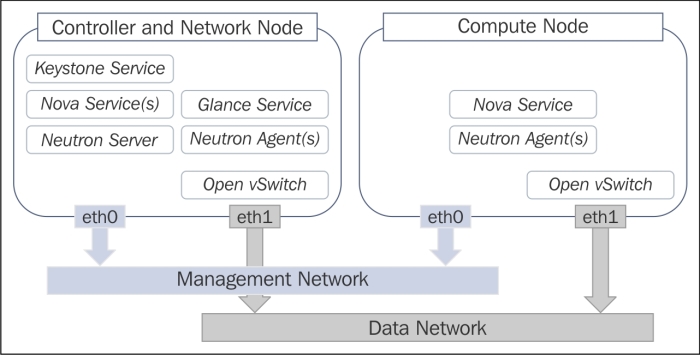Businesses are increasingly adopting cloud-based solutions for their IT requirements. This move to cloud started with the server virtualization where a hardware server ran as a virtual machine on a hypervisor.
The server hardware connects to the Network switches using Ethernet and IP to establish Network connectivity. However, as servers move from physical to virtual, the Network boundary also moves from the physical network to the virtual network. As the cloud platforms leverage virtualization, it is important that they support the physical and virtual networking effectively.
OpenStack is an open source cloud platform that helps build public and private clouds at scale. In OpenStack, the name for the OpenStack networking project is Neutron. The functionality of Neutron can be classified as core and service. In the rest of the book, the terms Neutron and OpenStack networking are used interchangeably.
The OpenStack networking core functionality refers to the Layer 2 (L2) Network connectivity and basic IP address management for virtual machines. Neutron provides the core functionality using entities such as Network, Subnet, and Port. This chapter will provide you with recipes about managing these entities. The OpenStack networking service functionality deals with the Layer 3 (L3) to Layer 7 (L7) capabilities as defined in the OSI Network model.
Neutron also works with the telemetry module called Ceilometer in order to let the cloud operators monitor the health of the OpenStack Networks.
In order to implement the recipes covered in this chapter, you will need an OpenStack setup, as described here:

This setup has one compute node and one node for the controller and networking services. For this chapter, you can also set up a single all-in-one environment. This book is based on OpenStack on the Ubuntu platform. For other platforms, such as Red Hat, the dashboard may have a different theme but there should not be any difference in the functionality.



